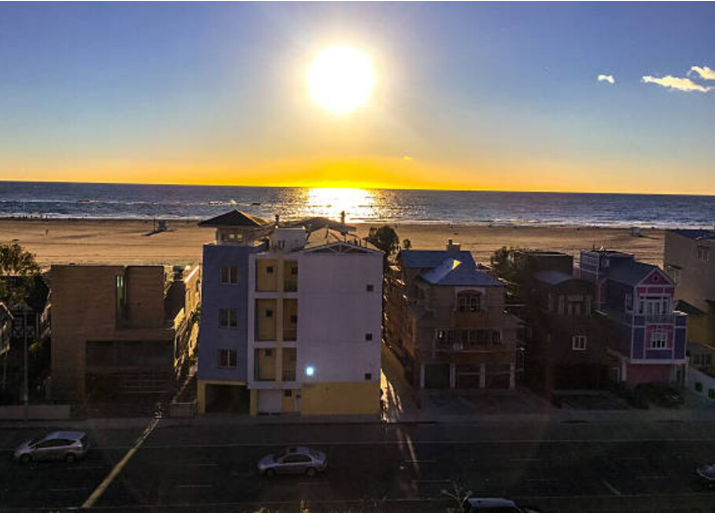The Difference between Second Home and Investment Property

Owning multiple properties can be a desirable situation, but how you categorize each property significantly impacts your financing costs and ownership responsibilities. If you plan to use the property as a second home, for vacations, or for extended stays, you’ll face a different set of mortgage requirements and regulations compared to if you are using it as an investment property or a source of rental income. Tax implications also vary based on the property’s classification.
When deciding whether to purchase a vacation home or an investment property—and how to classify it for your mortgage application—here’s what you need to consider.
Second home vs. investment property definitions
The distinction between second home and investment property loans hinges on how you intend to use the property.
- Second Home: A second home is an additional residence that you purchase for personal enjoyment. You live in it or visit it for part of the year.
- Investment Property: An investment property is intended for rental income. You plan to lease it out to generate revenue.
Sometimes, a property can serve both purposes. For instance, you might use it as a vacation home but occasionally rent it out when you’re not using it. However, earning rental income doesn’t automatically classify it as an investment property.
To determine how to classify the property, consider how much time you spend there. The “14-day limit rule” is a key guideline. According to CFP Elliot Pepper, co-founder and director of tax services at Northbrook Financial:
“If you personally occupy your second home for 14 days or fewer each year—or less than 10 percent of the days it is rented out—then it is considered a rental property, and any rental income would be taxable. You can also deduct expenses related to the property.”
Conversely, if you use the property for more than 14 days or more than 10 percent of the time it’s rented, rental income is not taxable, but you cannot deduct expenses, Pepper explains.
Second home vs. investment property mortgage requirements
Differentiating between a second home and an investment property is crucial for both tax purposes and financing. The criteria for second home mortgages and investment property mortgages are distinct and can significantly affect your financing options.
| Second home lender requirements | Investment property lender requirements | |
|---|---|---|
| Credit score minimum | 620-680 or higher | 700 or higher |
| Down payment minimum | 5%-10% | 15%-25% or more |
| Debt-to-income (DTI) ratio maximum | 45% | 45% |
Despite their differences, both second homes and investment properties share a key characteristic: they are considered riskier for lenders compared to primary residences. This is because, in financial difficulties, you’re more likely to prioritize the mortgage on your primary home over a secondary or investment property.
To account for this increased risk, lenders typically demand higher credit scores and larger down payments for second home and investment property mortgages. For example, while conventional loans may require a 3 percent down payment, lenders like Chase and Navy Federal Credit Union typically require a 15 percent down payment for investment properties.
Second home vs. investment property tax implications

When considering a vacation home versus an investment property loan, it’s important to be aware of the tax implications associated with each:
Second home tax rules
- Mortgage Interest Deduction: You can deduct mortgage interest up to a total debt limit of $750,000.
- Rental Limit: You cannot rent out the property for more than 14 days per year if you wish to deduct mortgage interest.
- Rental Income: Any rental income is non-taxable if the property is rented for fewer than 14 days per year.
Investment property tax rules
- Mortgage Interest Deduction: Mortgage interest is fully tax-deductible.
- Expense Deductions: You can deduct many property-related expenses, including property taxes, maintenance, utilities, and insurance.
- Rental Income: Rental income is taxable if the property is rented out for more than 14 days per year.
For second homes, remember that the $750,000 limit on mortgage interest deductions can be restrictive if you have multiple properties with a total mortgage exceeding this amount.
However, as tax expert Elliot Pepper notes, “Interest on a mortgage related to an investment property is fully deductible on Schedule E of Form 1040, and can be used to offset any income generated from the property.” Investment property owners can also take advantage of depreciation deductions.
It’s important to note that you cannot deduct the purchase cost of a personal residence. For investment properties, however, you can deduct depreciation annually based on the property’s purchase price, which helps offset rental income. This deduction reduces the property’s basis, potentially leading to a higher tax gain when the property is sold due to depreciation recapture. This gain is taxed at higher rates than traditional long-term capital gains.
For more details on the tax implications of second homes and investment properties, consult IRS Publications 936 and 527.
Second home vs. investment property mortgage rates
Mortgage rates for second homes and investment properties have risen in recent years, and these rates are generally higher compared to those for primary residences.
However, there is some positive news on the horizon. Mortgage rates are expected to begin decreasing in 2024, with the Federal Reserve anticipated to lower its primary lending rates approximately three times throughout the year. As a result, mortgage rates for second homes and investment properties should also start to decline.
Can you call an investment property a second home?
Thinking about labeling your investment property as a second home to benefit from perks like a lower down payment and interest rate? It’s not a good idea. In the mortgage world, accurate classification is crucial. Misrepresenting your property to lenders or the IRS can lead to serious consequences.



